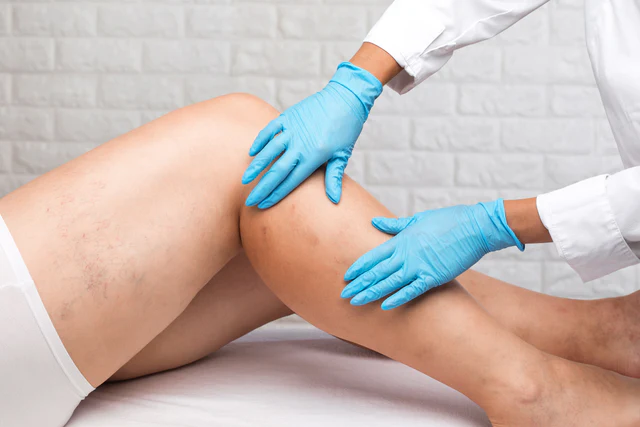
Spider and varicose veins, two common vascular conditions that affect leg health. Our guide explains the causes, symptoms, and the most effective treatment options to help you navigate through these venous issues and achieve healthier legs.
Spider Veins (telangiectasias): Small, damaged capillaries, venules, and arterioles that can appear on the surface of the legs or face. They are often blue, purple, or red and are visible through the skin.
While spider veins aren’t actually veins, these small blood vessels connect with larger blood vessels as part of your circulatory system. Typically spider veins don’t result in symptoms and are more cosmetic.
Varicose Veins: Larger, swollen, and twisted veins that appear mostly on the legs. They can be painful and indicate more significant venous issues. Symptoms can include aching or discomfort in the legs, and swelling, especially in the lower legs and ankles.
Compression stockings are a cornerstone in treating both spider and varicose veins. They apply gentle pressure to your legs, promoting better blood flow and reducing the discomfort and swelling associated with these conditions. They are especially effective for those who spend a lot of time on their feet or have a family history of venous issues.
When to See a Specialist
If you're experiencing significant discomfort, or the appearance of spider or varicose veins is causing concern, consulting with a vein specialist or healthcare provider is advised. Early intervention can prevent complications and improve outcomes.
Your Journey to Healthier Legs Starts Here Understanding and managing spider and varicose veins are key steps towards maintaining leg health. With a range of treatment options, including compression stockings, you can alleviate discomfort and improve your quality of life. Explore our website for more information and resources on leg health and vein care.